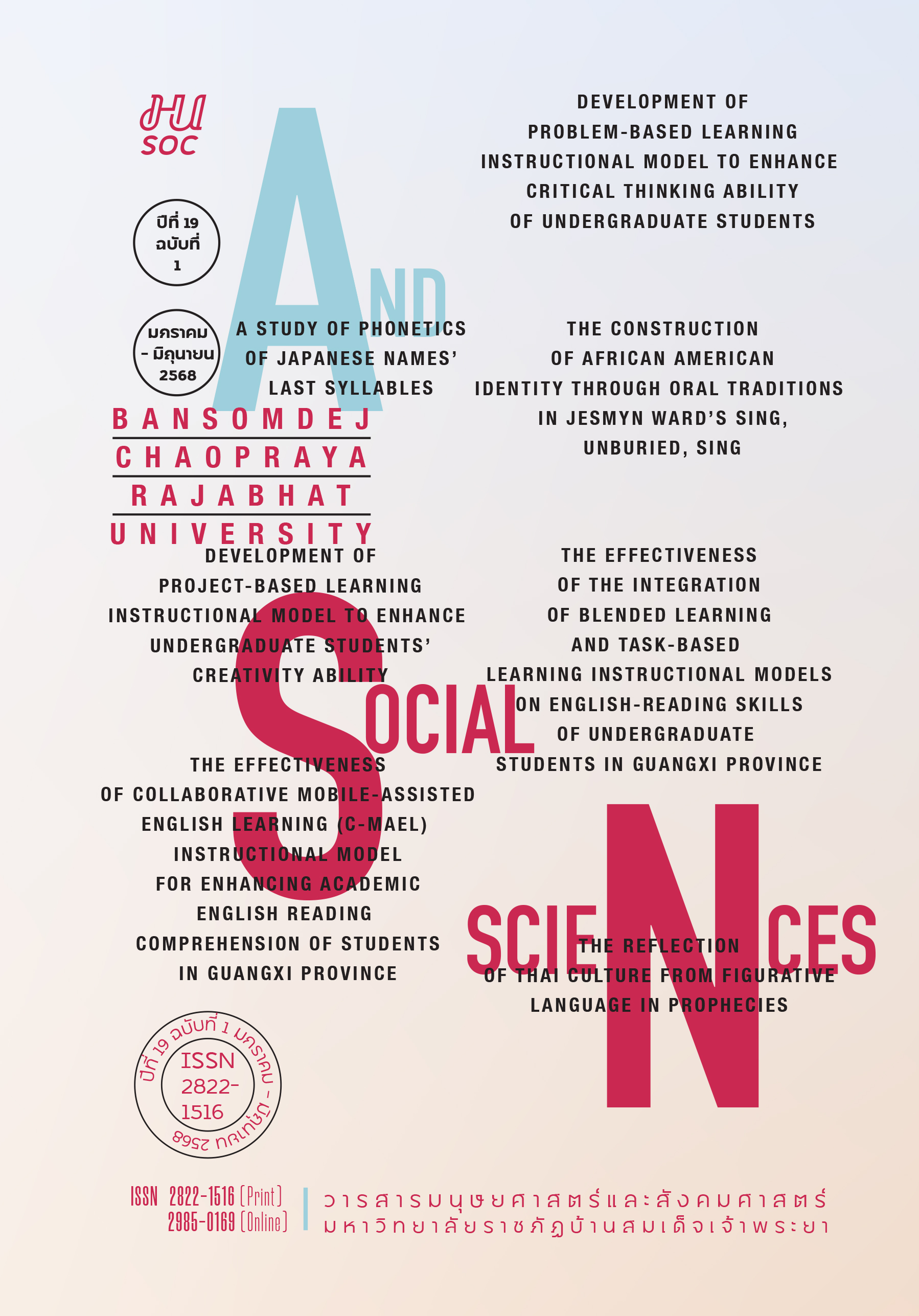Proposed Guidelines for Decreasing Bankruptcy Filing Cases
Keywords:
Bankruptcy Law, Individual Debtors, Voluntary BankruptcyAbstract
The objective of this article is to suggest guidelines on decreasing bankruptcy filing cases by exploring the determination of the number of debts filing bankruptcies and chances of debt recovery given to natural person debtors to go through a rehabilitation procedure. From the study, it was found that the determination of the number of debts filing bankruptcies which creditors employed to sue natural persons indebted to one or more creditors for at least one million baht. Juristic persons indebted to one or more creditors for a total of at least two million baht. The determination of the number of debts which give the right to creditors to file bankruptcy against their debtors is not suitable for the present economic and social situation. Moreover, the consideration of a natural person debtor’s rehabilitation gives a chance for the debtor to request for financial rehabilitation which enables them to be free from litigation or filing bankruptcy. However, the determination had specified the minimum number of debts for a natural person debtor asking for rehabilitation, which makes debtors unable to fully go through the rehabilitation procedure. Hence, the findings were drawn to the following guidelines on decreasing bankruptcy filing cases: (1) Revise the number of debts which creditors file bankruptcy against natural person and juristic person debtors to be compatible with the present context; and (2) consider the minimum debts which a natural person debtor may request for the consideration of getting into a rehabilitation procedure without the determination of the minimum debts so that the debtor who is willing to go through the legal procedure can proceed without being sued for bankruptcy.
References
ILaw. (2022). Offering alternative pathways for debtors to ‘restore financial stability’ without the necessity of undergoing bankruptcy proceedings. Retrieved Febuary 15, 2024. https://www.ilaw.or.th/articles/5429. [In Thai]
Intarawiset, N., Nilbai, T, Thongphat, T., & Antarasena. A. (2022). The Effect of Household Socio-Economic Factors on Household Debt in Thailand. Journal of Management Sciences Suratthani Rajabhat University, 9(1), 115–138. Retrieved from https://so03.tcithaijo.org/index.php/msj/article/view/254459 [In Thai]
Jaiyen, P., & Choochuna, D. (2023). Household Debt Crisis of Thailand In The Global Economic Recession Age: Problem And Solution. Journal of Buddhist Innovation and Management, 6(4), 213. Retrieved https://so06.tcithaijo.org/index.php/bim/article/view/261924 [In Thai]
Kerd-int, N., Wongart, K., & Bodeerat, C. (2021). Remedial measures of Government for Those affecting the Spred of COVID 2019. Journal of Roi Kaensarn Academi, 6(11), 259–272. Retrieved from https://so02.tci-thaijo.org/index.php/JRKSA/article/view/250385 [In Thai]
Khunta, C., & Tangtrongpairoj, S. (2021). Thai Household Debts And The Sustainable Solution. Journal of Liberal Arts and Management Science Kasetsart University, 8(1), 131-145. [In Thai]
Kongchuen, A. (2022). Filing Petition And Voluntary Bankruptcy Process For Individual Debtors In Thailand. [Master’s thesis, Sripatum University]. [In Thai]
Lakarnchua, P. (2020). The right to enter into voluntary bankruptcy proceedings for individual debtors. Office of the Court of Justice. Retrieved Febuary 10, 2024. https://library.coj.go.th/pdf-view.html?fid=14610&table=files_biblio. [In Thai]
Legal Execution. (2023). International Conference on Voluntary Insolvency and SMEs or Individual Reorganization Procedure: Debtors’ Option to Restart. Retrieved Febuary 18, 2024. file:///C:/Users/Shin/Downloads/Report-of-the-International-Conference-2023-Final%20(2).pdf
Lohitanon, M. (2016). Commencement Of Insolvency Proceeding. [Master’s thesis Thammasat University]. [In Thai]
Manager. (2017). Twenty years of the Tom Yum Kung crisis From business debt to household debt. Retrieved January 30, 2024. https://www.landactionthai.org/2012-05-18-03-24-45/article/item/1913-20170703-new7.html [In Thai]
National Housing Authority, (2018). Simulated Learning Development Museum for Residential Living. Retrieved January 18, 2024. http://housingvm.nha.co.th/VM_7.html [In Thai]
Panichwong, P. (2000). Explanation: Bankruptcy law. [In Thai]
Rathamarit, N. (2006). Tom Yum Kung Crisis. King Prajadhipok’s Institute. Retrieved January 30, 2024. http://wiki.kpi.ac.th/index.php?title=วิกฤตต้มยำกุ้ง [In Thai]
Sonjai, P (2022). The concept of assisting an individual debtor through bankruptcy proceeding. Panyapiwat Journal, 14(3). 112-134. [In Thai]
Tantihapakul, T. (2017). Factors that Impact the Delinquently in Consumer Loans of Commercial Banks and Non-bank Financial Institutions in Thailand. [Master’s thesis, Chulalongkorn University]. [In Thai]
Teeravechakul, K. (2013). Explanation: Bankruptcy and rehabilitation law. Author. [In Thai]
TTB Analytics. (2024). The projected increase in household debt in Thailand by the end of 2567 (B.E.) to approximately 91.4% of GDP signals concerns for the future, with three key factors contributing to this worrying trend. Retrieved January 31, 2024. https://media.ttbbank.com/5004/tmba_economic_analysis/5707-highlight-desktop-th.pdf [In Thai]
Uttabolyukol, M. (2014). An alternative to Bankruptcy: Case Study Of Individuals’s Rehabilitation. [Master’s thesis Sripatum University]. [In Thai]
Wayupap, P. (2016). Civil and Commercial Coad: Obligation. (11st ed). Institute Of Legal Education Of The Thai Bar. [In Th
Downloads
Published
How to Cite
Issue
Section
License
Copyright (c) 2024 Faculty of Humanities and Social Sciences Bansomdejchaopraya Rajabhat University

This work is licensed under a Creative Commons Attribution-NonCommercial-NoDerivatives 4.0 International License.




